Carbon Neutrality Initiatives by Shimadzu Group

Shimadzu has set itself the target of net zero CO2 emissions from all business activities by 2050 and is implementing various measures in pursuit of this goal.
Carbon Neutrality: A Global Goal
Global warming is the principal cause of climate change, which manifests as abnormal weather patterns such as extreme heat and heavy rainfall. Global warming is said to be caused by increased emissions of CO2 and other greenhouse gases from industrial development, and taking measures to curb these emissions where feasible has become an urgent issue.
This movement to reduce emissions has brought the term “carbon neutrality” into common usage. Carbon neutrality refers to a situation in which greenhouse gas emissions are at net zero: that is, a situation in which the amount of greenhouse gases being emitted equals the amount of greenhouse gases absorbed by forests and other methods.
The Paris Agreement adopted in 2015 commits to hold “the increase in the global average temperature to well below 2 °C above pre-industrial levels” and to pursue efforts “to limit the temperature increase to 1.5 °C above pre-industrial levels,” where the signatories to this agreement agreed to begin pursuing these climate goals in 2020. The 1.5 °C target stated in the Paris Agreement is necessary to prevent climate change, and the United Nation’s Intergovernmental Panel on Climate Change (IPCC) reported in its “Special Report on Global Warming of 1.5 °C” that achieving the 1.5 °C target requires that global CO2 emissions reach net zero by 2050.
Since this target was established, businesses and countries around the world, including Japan, have declared their commitment to achieving carbon neutrality and accelerated various efforts in pursuit of this goal.
Shimadzu’s Vision for 2050
Shimadzu has set itself the target of net zero CO2 emissions from all business activities by 2050 and is introducing strict energy-saving measures and shifting to renewable sources of energy to achieve this goal.
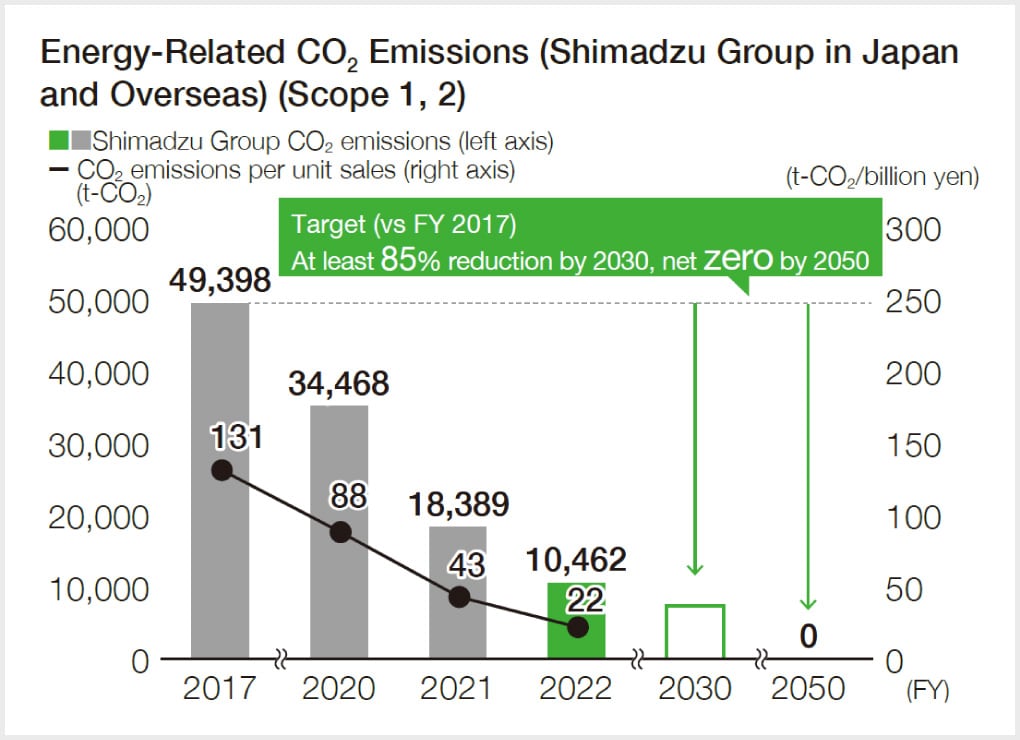
Shimadzu Group business activities released close to 50,000 tons of CO2 in 2017. This amount was reduced to around 20,000 tons in 2021 and further reduced to just 10,000 tons in 2022. Shimadzu Group aims to reduce its CO2 emissions to around 7,000 tons by 2030.
Visualizing Electricity Consumption to Help Save Energy
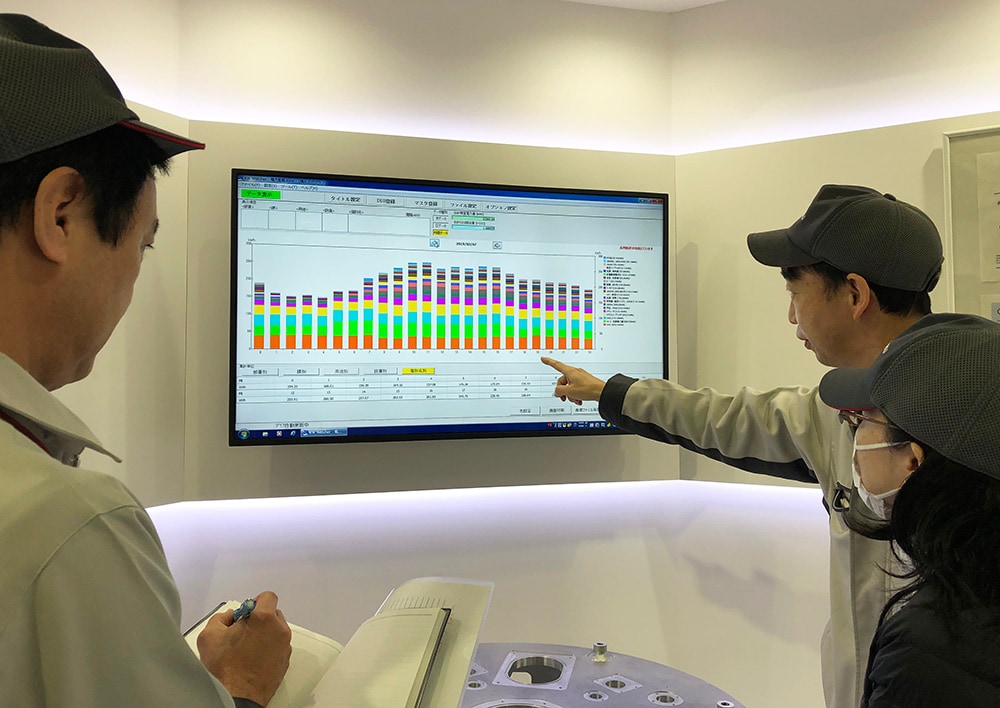
Shimadzu is using the visualization of its electricity consumption to help implement effective energy-saving measures. Smart meters are installed in key Japanese production plants and are being used to observe data on electricity consumption and facility operation in real time. “Energy saving diagnosis” and other tools are also being used in efforts aimed at reducing energy waste.
Transitioning to Clean, Renewable Energy
Transitioning to renewable energy forms a key component of measures to reduce CO2 emissions at Shimadzu. Renewable energy refers to electricity created from natural energy sources such as the sun, wind, and biomass, and is energy that can be produced domestically without greenhouse gas emissions. Switching business activities to electricity from renewable sources offers Shimadzu an opportunity to dramatically reduce its CO2 emissions. In 2021, Shimadzu switched its production plants and other sites to electricity from renewable energy sources.
Shimadzu is also increasing its in-house electricity generation by installing solar panels at production plants and other sites. Thanks to these initiatives, 85 % of the electricity used by Shimadzu Group in 2023 was from renewable sources.
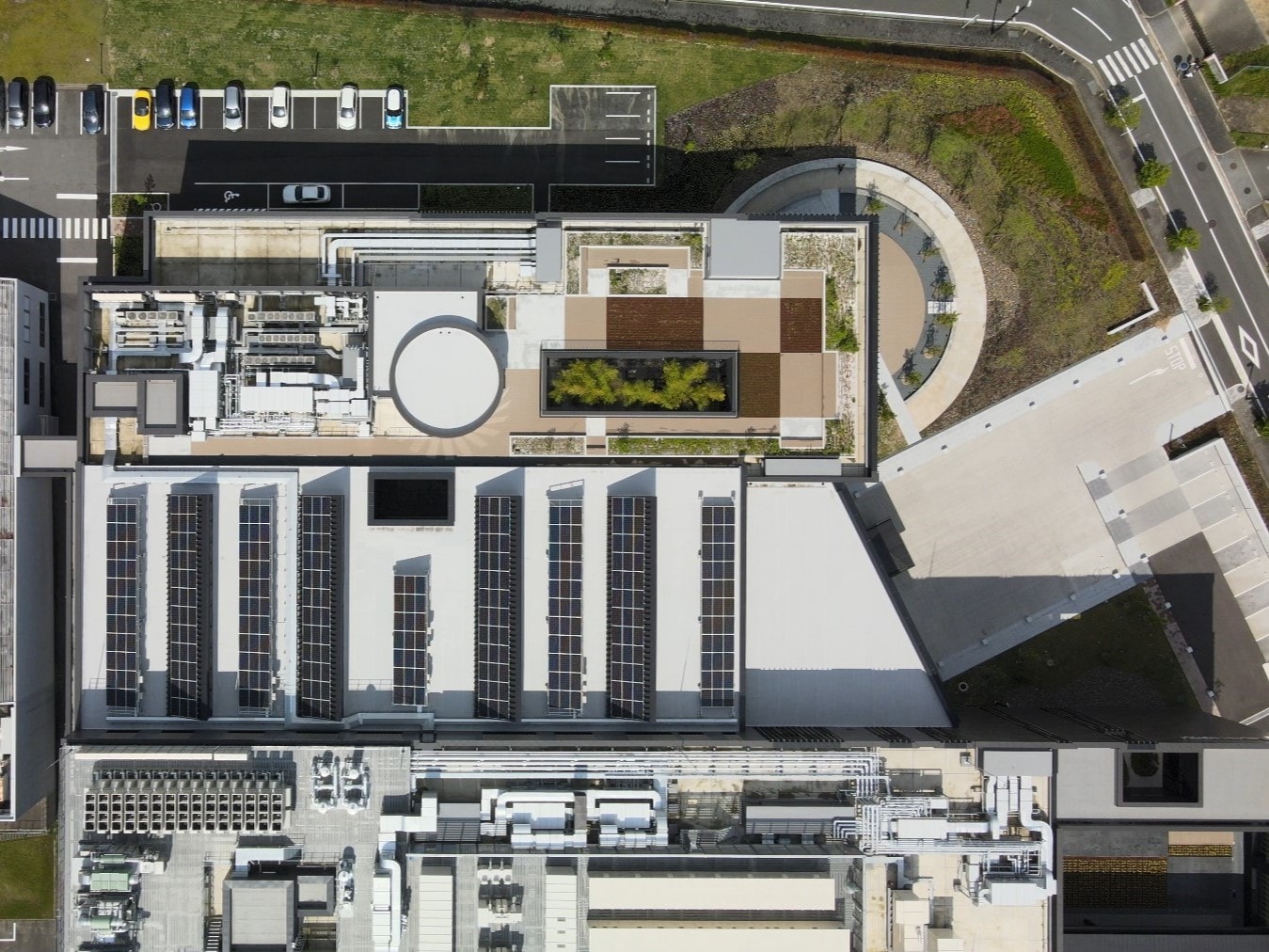
Aerial photograph of Technology Research Laboratory (SHIMADZU Future Collaboratory), newly established in Kyoto in 2022
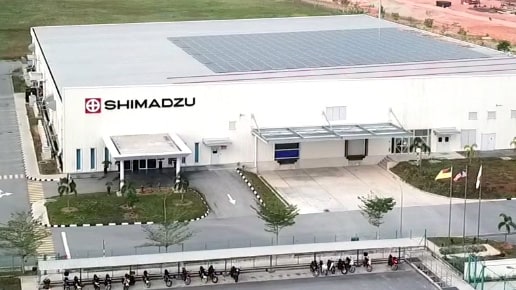
Shimadzu Manufacturing Asia Sdn. Bhd., analytical instrument plant in Malaysia
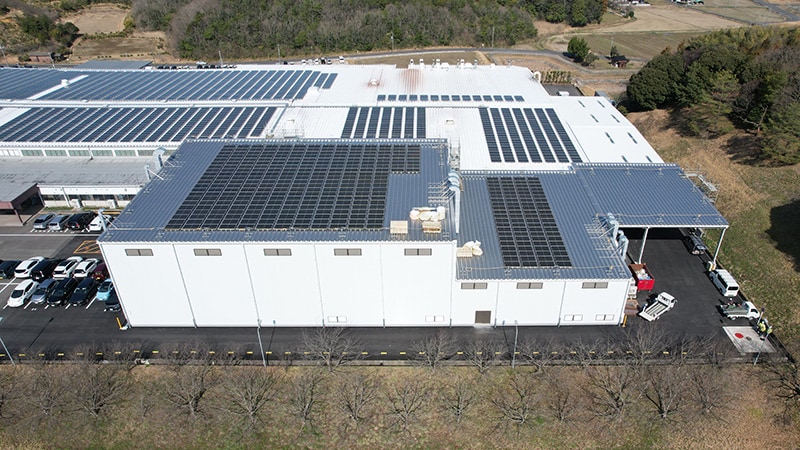
Shimane Shimadzu, medical systems plant in Shimane Prefecture
Managing Two Forests
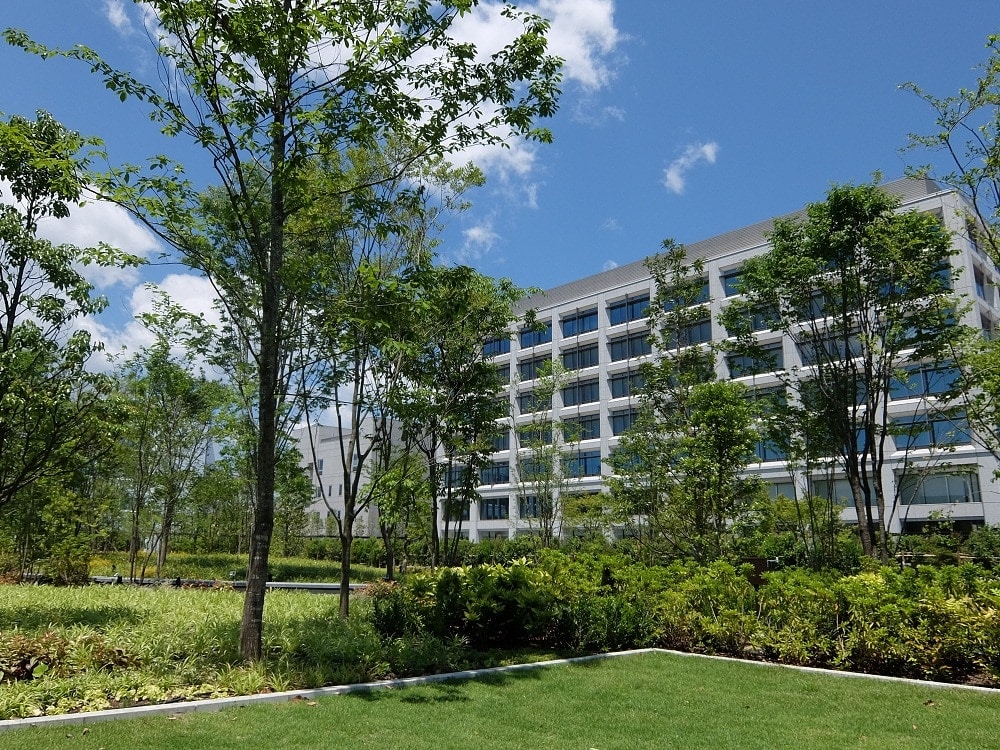
Shimadzu also manages two forests. Shimadzu Forest is located within the grounds of Shimadzu Head Office/Sanjo Works (Kyoto City), covers around 8,000 square meters of ground, and contains around 1,100 plants of 100 different species including local native species.
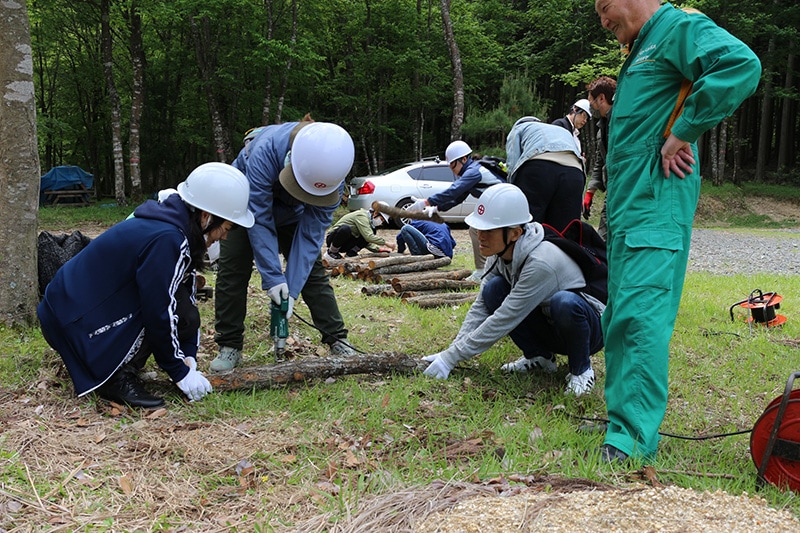
In 2008, Shimadzu also joined the activities of Kyoto Model Forest Association and continues to undertake the “Shimadzu Forest Planting Project” in Nantan City, Kyoto Prefecture. As well as allowing employees and their families to participate in forest maintenance and tree planting, Shimadzu provides environmental education in a natural setting and is engaged in forest and ecosystem conservation.
 Page Title and URL Copied.
Page Title and URL Copied.


